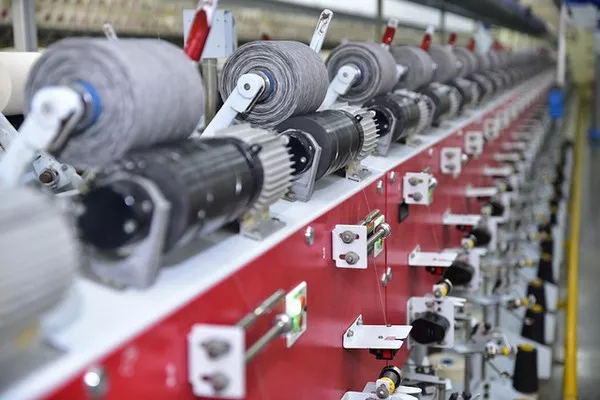In the modern world, the importance of wastewater treatment facilities cannot be overstated. With urbanization and industrialization on the rise, these facilities play a pivotal role in maintaining ecological balance and safeguarding public health. By employing a series of intricate processes and cutting-edge technologies, wastewater treatment facilities transform contaminated water into a resource that can be safely returned to the environment. This article takes an in-depth look at how these facilities operate, from initial intake to final discharge.
Primary Treatment: Removing Solid Debris
The journey of wastewater treatment commences at the primary treatment stage, where the focus lies on the physical removal of large solid particles and debris. Wastewater enters the facility and undergoes preliminary screening using bar screens, which intercept and remove objects like plastics, sticks, and other non-biodegradable materials. The screened wastewater then flows into a grit chamber, where heavier inorganic particles, such as sand and gravel, settle to the bottom due to gravity. These processes not only enhance the effectiveness of subsequent treatment steps but also prevent potential damage to equipment further along the treatment chain.
Secondary Treatment: Harnessing Biological Processes
Following primary treatment, the wastewater enters the heart of the treatment process: secondary treatment. Here, biological processes are harnessed to break down the complex organic compounds present in the water. The activated sludge process is a cornerstone of this phase. The wastewater is mixed with a culture of microorganisms that thrive on organic pollutants. Through aeration, these microorganisms are supplied with the necessary oxygen for metabolic activities. As they feed on the organic matter, they multiply and form aggregates known as flocs. These flocs are then settled out in a secondary sedimentation tank, creating a concentrated sludge that can be recycled back to the activated sludge process or subjected to further treatment.
Tertiary Treatment: Polishing the Effluent
Although secondary treatment significantly reduces the organic content of the wastewater, dissolved substances and fine particles may still persist. This is where tertiary treatment comes into play, focusing on the removal of residual impurities to achieve the desired water quality standards. Advanced filtration techniques, such as sand filtration, microfiltration, and ultrafiltration, are often employed to capture these remaining suspended particles and microorganisms. Moreover, chemical coagulants and flocculants can aid in aggregating fine particles, allowing them to be more easily removed during the filtration process.
Disinfection: Eradicating Pathogens
Disinfection is a critical step that ensures the treated water is safe for release into the environment. Pathogens, disease-causing microorganisms, and remaining bacteria are targeted and eradicated during this phase. Common disinfection methods include chlorination, ozonation, and UV irradiation. Chlorination involves introducing chlorine gas or hypochlorite into the water, effectively destroying bacteria and viruses. Ozonation relies on ozone’s powerful oxidizing properties to break down organic compounds and pathogens. UV disinfection exposes the water to ultraviolet light, which damages the DNA of microorganisms, rendering them incapable of reproduction. The choice of disinfection method depends on factors such as the level of pathogen removal required, potential environmental impacts, and cost considerations.
Sludge Treatment and Management: A Sustainable Approach
Throughout the wastewater treatment process, various solids and sludge are generated. Effective management of these residuals is essential for minimizing environmental impact. Sludge is often thickened and dewatered to reduce its volume before undergoing further treatment. Anaerobic digestion is a common approach for breaking down organic matter in sludge, producing biogas as a valuable byproduct that can be utilized for energy generation. The resulting sludge can then be applied as a soil conditioner in agriculture or safely disposed of, closing the loop on waste and promoting sustainability.
FAQs
1. What is the purpose of a wastewater treatment facility?
A wastewater treatment facility’s primary purpose is to remove contaminants, pollutants, and pathogens from wastewater, ensuring that it can be safely released back into the environment without causing harm to ecosystems or public health.
2. How does secondary treatment work in wastewater treatment plants?
Secondary treatment involves using biological processes to break down organic compounds present in wastewater. The activated sludge process, a common secondary treatment method, employs microorganisms to consume organic matter. Aeration provides the microorganisms with oxygen, allowing them to grow, aggregate into flocs, and settle out in a sedimentation tank.
3. What happens to the sludge generated during wastewater treatment?
Sludge generated during the treatment process is typically subjected to further treatment and management. This can include anaerobic digestion, which breaks down organic matter and produces biogas, or dewatering to reduce the sludge’s volume. The resulting sludge can be used as a soil conditioner in agriculture or properly disposed of.
4. Why is disinfection necessary in wastewater treatment?
Disinfection is crucial to eliminate remaining pathogens and microorganisms that may be present in the treated water. Pathogens pose a health risk to humans and aquatic ecosystems, and disinfection ensures that the treated water meets safety standards before being released into the environment.
5. How do innovations like membrane bioreactors contribute to wastewater treatment?
Innovations such as membrane bioreactors (MBRs) enhance wastewater treatment efficiency. MBRs combine biological treatment with membrane filtration, resulting in high-quality effluent and a smaller physical footprint. These advancements signify the industry’s progress toward more sustainable and effective wastewater treatment solutions.
Innovations in Wastewater Treatment: Looking Ahead
As technology advances, so does the field of wastewater treatment. Innovations are continually being explored to enhance treatment efficiency and minimize environmental footprint. Membrane bioreactors (MBRs) stand out as a notable advancement, combining biological treatment with membrane filtration. MBRs offer a compact solution that produces high-quality effluent while occupying a smaller footprint compared to conventional systems. Forward osmosis and electrochemical treatment are also emerging as potential game-changers, showcasing the industry’s commitment to improving resource recovery and environmental stewardship.

